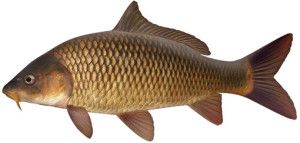By Josh Moloney, the ARRC’s roving research reporter!
If you were curious to know what lurks in the depths of your local lake or river, the thought of arduous traditional trapping methods might dissuade you from further entertaining that thought. If there were a much simpler, less intrusive method for sampling those elusive animals then that would surely be the way to go, full tilt, without restraint, mapping the species diversity of every water body you can find!
Environmental DNA (eDNA) surveillance is a relatively new method for detecting species occurrence and abundance. This method is being used by scientists today to determine the presence of rare species, which include both endangered natives and introduced invasive species. Dr Elise Furlan of the Institute for Applied Ecology at the University of Canberra is currently involved with eDNA surveillance of invasive fish such as European Carp in Australian freshwater systems. Her work will help to promote the efficacy of eDNA as a species monitoring and management tool.
 As you may already know, invasive species like European Carp, Redfin Perch and Tilapia exist in many waterways throughout Australia. As well as predating upon many native fish species such as Rainbowfish, Carp Gudgeon, and the eggs and fry of larger fish, Redfin Perch is the main host for the Epizootic Haematopoietic Necrosis Virus, or EHN Virus which is known to significantly affect susceptible native fish populations like Silver Perch and Macquarie Perch. Fouling of lakes is anotherproblem associated with European Carp as it’s feeding methods destroy vegetation that normally provide important habitat for native fish and other organisms.
As you may already know, invasive species like European Carp, Redfin Perch and Tilapia exist in many waterways throughout Australia. As well as predating upon many native fish species such as Rainbowfish, Carp Gudgeon, and the eggs and fry of larger fish, Redfin Perch is the main host for the Epizootic Haematopoietic Necrosis Virus, or EHN Virus which is known to significantly affect susceptible native fish populations like Silver Perch and Macquarie Perch. Fouling of lakes is anotherproblem associated with European Carp as it’s feeding methods destroy vegetation that normally provide important habitat for native fish and other organisms.
Dr Furlan mentions that eDNA sampling has several advantages over traditional freshwater sampling methods. Where traditional electro-fishing and/or netting methods are employed to determine species distributions, species present at low densities can often be missed and their distribution misrepresented. Traditional methods of sampling require a lot of effort and time, and incur a high cost, not to mention the intrusive nature of the sampling, which may have significant negative impacts on sensitive indigenous species. eDNA sampling requires a simple non-intrusive water sample and, because of its sensitivity to low concentrations of shed or sloughed cells, eDNA analysis allows for the detection of species at very low abundance.
Since 2008 there has been an increasing trend in scientific research published on the subject of freshwater eDNA surveillance (hyperlinked to Ficetola et al.), with much emphasis on its potential application for improved monitoring and management of freshwater environments.
eDNA surveillance also has great potential for the monitoring of our native endangered species. For instance, wild numbers of Corroboree Frogs reinforced by captive bred reintroductions (hyperlinked tocorroboreefrog.com.au) could benefit from eDNA surveillance to provide sensitive and accurate data on their distribution, with a greatly reduced amount of time and effort in comparison with traditional monitoring methods. Although the application of eDNA surveillance has risen in popularity amongst molecular biologists and ecologists in recent years, there is still a lack of public awareness regarding its true management potential.
——————————————————————————————
Dr Furlan is a geneticist with a background in platypus research (hyperlinked to Furlan et al.), focusing on the genetic diversity of platypuses and the extinction vulnerability of two island populations of the species.